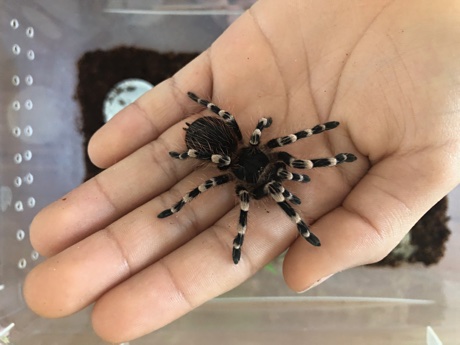Guide to Concurrency in Python with Asyncio
This is a quick guide to Python’s
asynciomodule and is based on Python version 3.8.
Source: Guide to Concurrency in Python with Asyncio, a guide by Mark McDonnell.
This is a quick guide to Python’s
asynciomodule and is based on Python version 3.8.
Source: Guide to Concurrency in Python with Asyncio, a guide by Mark McDonnell.
This week I was debugging a misbehaving Python program that makes significant use of Python’s asyncio. The program would eventually take very long periods of time to respond to network requests. My first suspicion was a CPU-heavy coroutine hogging the thread, preventing the socket coroutines from running, but an inspection with
pdbshowed this wasn’t the case. Instead, the program’s author had made a couple of fundamental mistakes using asyncio. Let’s discuss them using small examples.
Source: Latency in Asynchronous Python, an article by Chris Wellons.
This article intends to be helpful for those who are already command line (CLI) users. Complete beginners are of course encouraged to read on, even though they may not grasp all the advantages immediately and perhaps there is a lot of other more important things to learn when starting. On the other hand, I expect long time CLI users to already work similarly. I do hope they might also find interesting tricks to adopt.
Source: Five tips to be a more effective command-line user, an article by Cosimo Streppone.
This file is used to sequence functions that could fail together, allowing you to avoid doing an
if err != nilcheck on every single fallible function call.
Source: maybedoer: the Maybe Monoid for Go, an article by Christine Dodrill.
One common kind of data stored in a configuration file is options. In this post, I'll talk about some nuances we have to be aware of when storing options in JSON and unmarshaling them to Go.
Specifically, the most important difference between options and any other data is that options are often, well... optional. Our program can have a large number of possible configuration options, but we may want to configure any particular invocation with only a subset - leaving all the others at their default values.
Source: Optional JSON fields in Go, an article by Eli Bendersky.
It’s not a particularly new or exciting take to say that we’ve outgrown Bash. The Unix shell environment was novel and powerful in its day, but its age is really starting to show.
Source: Bash Romance.
make and git diff for a simple and powerful test harnessPeople regularly go for complex test harnesses; and when you’re in an ecosystem, they can be a good fit. But outside ecosystems, it’s actually quite easy to produce a fairly good test harness.
Source: Using make and git diff for a simple and powerful test
harness,
an article by Chris Morgan
Almost two years ago, I moved from a cushy corporate Scala job to a riskier mid-stage startup using Haskell. This post summarises my thoughts about Haskell after experiencing it first hand.
Source: Simple Haskell is Best Haskell, an article by Sam Halliday.
I wrote bash scripts for several years now. You can find old bash scripts of mine on GitHub but most of them aren’t maintained anymore - and i have a reason for that.
Source: Forget Bash, take Python!, an article by Christoph Miksche.
Recently, I was tipped off about certain sites performing localhost port scans against visitors, presumably as part of a user fingerprinting and tracking or bot detection. This didn't sit well with me, so I went about investigating the practice, and it seems many sites are port scanning visitors for dubious reasons.
Source: Why is This Website Port Scanning me, an article by Charlie Belmer.
The great thing about Python is that it makes developers’ lives easy — import a couple of libraries to do the hard stuff for you, and you’re off to the races. This holds true when creating a threaded web scanner that’s capable of making multiple concurrent requests — with Python it’s easy to accomplish in a short amount of dev time.
Source: How to Create a Threaded Web Scanner in Python, an article by Kevin Dawe.
An integer in Python is not a traditional 2, 4, or 8-byte implementation but rather it is implemented as an array of digits in base 230 which enables Python to support super long integers. Since there is no explicit limit on the size, working with integers in Python is extremely convenient as we can carry out operations on very long numbers without worrying about integer overflows. This convenience comes at a cost of allocation being expensive and trivial operations like addition, multiplication, division being inefficient.
Source: Python Caches Integers, an article by Arpit Bhayani.
Today, shortly after Adam returned from school, one of his birthday presents finally arrived; a female Acanthoscurria geniculata. I had ordered this tarantula the 6th of May, 2020 with Robert of Fatbob's Exotics:
Together with shipping within the Netherlands it came down to €32. Originally, Adam wanted to have a female Brachypelma hamorii but when I contacted Robert the 5th of May this tarantula was no longer available.

Due to the colder nights it took a while before Robert could ship the spider safely. But yesterday it got picked up by DPD and today it arrived. Not on time for Adam's birthday, which was the 12th of May, so he had been asking now and then "When is my tarantula coming?"

For the terrarium I drilled plenty of holes in two sides of a plastic box and several more in the lid. Together with Adam I added plenty of substrate; slightly moist coco peat. I had also cut a cork tube in half, which Adam added, together with two plastic plants. Finally, I added a plastic bottle lid with water to provide a source of moisture to the spider.

We tried to feed the tarantula a mealworm larva, Tenebrio molitor, but it was not interested. In my experience sometimes tarantulas accept food after travelling and sometimes they don't. Later in the afternoon when I checked the terrarium I noticed that she had been moving substrate out of the cork tube and made a nice pile next to it.

In the evening Adam and I checked again, but she was still well hidden in her new burrow. We also tried to feed his Heterometrus petersii. While the scorpion did pick up the mealworm I put next to it, and even held it for a while, it was too stressed out because I had lifted the piece of wood it normally hides under to actually eat it. Adam and I decided to try again tomorrow. Adam is a little worried about his scorpion since it hasn't been eating since we bought it, the 23rd of February, 2020 at the Invertebrate Show in Harmelen.
We did leave a pre-killed mealworm next to the burrow entry of his tarantula, though. Let's see if it's gone tomorrow.
I have a particular view of Python performance from my experience on the Pyston project, and since this view is somewhat nonstandard I wanted to take some time to explain it and give a motivating example.
A common explanation for Python's low performance is that it is an interpreted language. In this post I hope to show that while the interpreter adds overhead, it is not the dominant factor for even a small microbenchmark. Instead we'll see that dynamic features -- particularly, features inside the runtime -- are to blame.
Source: Python performance: it’s not just the interpreter, an article by Kevin Modzelewski.
The most basic, fundamental idea behind Nix is this:
Everything on your computer implicitly depends on a whole bunch of other things on your computer.
- All software exists in a graph of dependencies.
- Most of the time, this graph is implicit.
- Nix makes this graph explicit.
Source: What Is Nix, an article by Burke Libbey.
Here is my Katas for creating BASH programs that work. Nothing is new here, but from my experience pepole like to abuse BASH, forget computer science and create a Big ball of mud from their programs. Here I provide methods to defend your programs from braking, and keep the code tidy and clean.
Source: Defensive BASH programming, an article by Kfir Lavi.
In the afternoon I gave the smallest of the tarantulas I keep, a Hapalopus sp. Colombia large form sling, a small mealworm, Tenebrio molitor. Even though the mealworm was larger than the tarantula, as soon as I dropped it next to it, the tarantula attacked the larva, wrestled with it, and subdued it.

I keep this species since April the 7th, 2020. And while I have attempted to give it pre-killed mealworms before as far as I know this is the first time it actually eats in my care.
This spider has the common name "Pumpkin Patch" tarantula because of the orange pattern on the abdomen. For more information on this dwarf tarantula read Hapalopus sp. Colombia – The “Pumpkin Patch” by Tom Moran.
I previously wrote how to configure minicom to connect to a device over serial UART. In that post I mentioned that minicom might not be the best tool for the job. Consider that
minicomis adding a lot of unnecessary complexity. If you think about it, we are taking a command line utility intended for communicating with modems, stripping all that functionality away so that we are left with nothing more than a terminal emulator that knows how to connect to a foreignTTY. Yet, we are probably runningminicomfrom a perfectly capable terminal emulator such asxterm. All we need is a way of connecting our terminal emulator to the target serial port in raw mode. As long as the device side is running a login on the receiving end, we can simply let our terminal emulator do what it was designed for.
Source: Let SOcket CAT Be Thy Glue Over Serial, an article by Trevor Wilson.
In the afternoon I checked on the Chromatopelma cyaneopubescens sling I keep and noticed that it was resting on the part of the substrate I keep slightly moist. Because it was quite dry I added some water with a dosing syringe expecting the tarantula to take a drink but instead it attacked the water. Time to try to feed it, so I gave it a small mealworm larva, Tenebrio molitor.

I have been taking care of this spiderling since February the 23rd, 2020 when I bought it at the Invertebrate Show in Harmelen.
This tarantula has the common name "Green Bottle Blue" (GBB for short) and is considered a beginner species. For more information on this tarantula read C. cyaneopubescens (or the GBB) by Tom Moran.